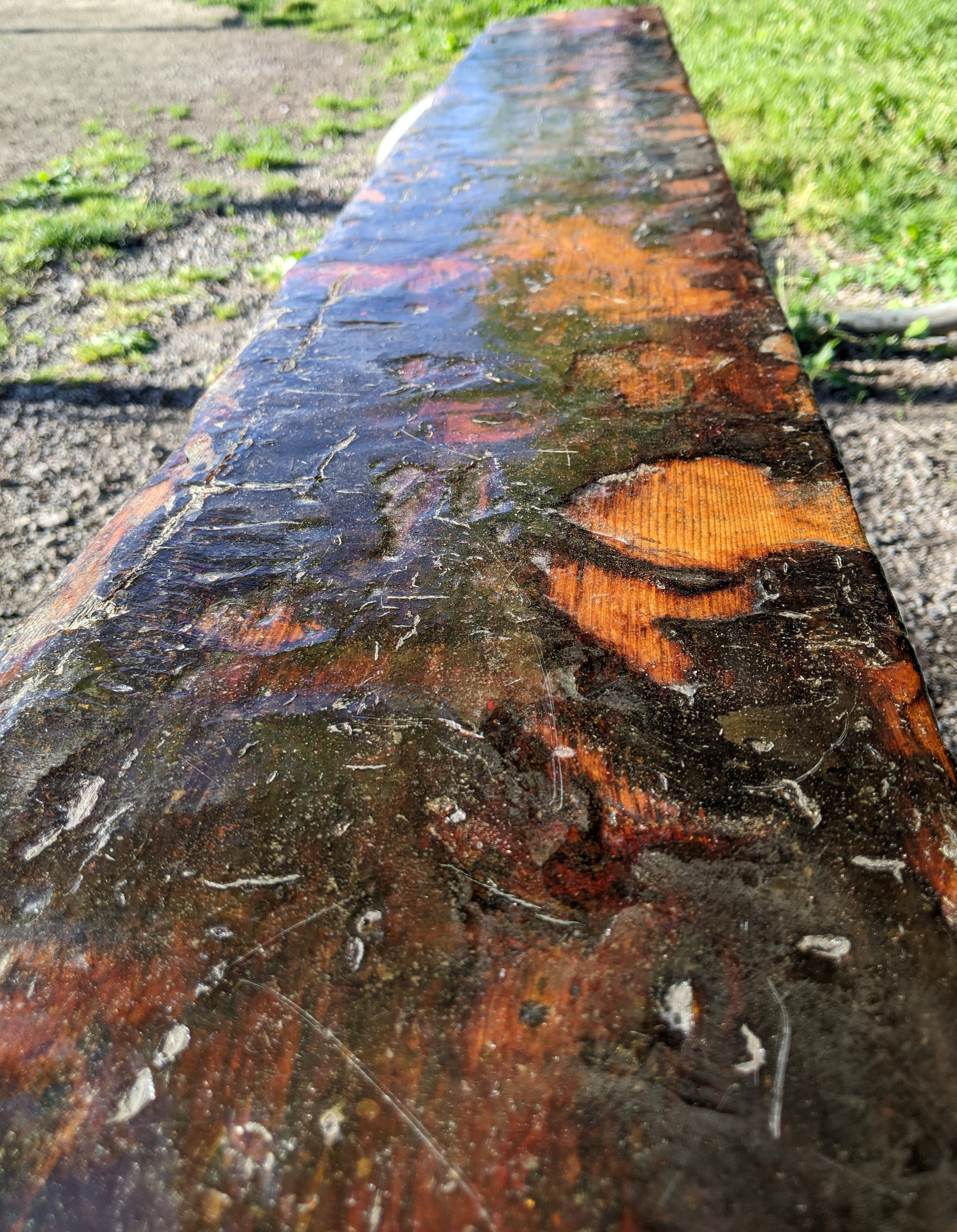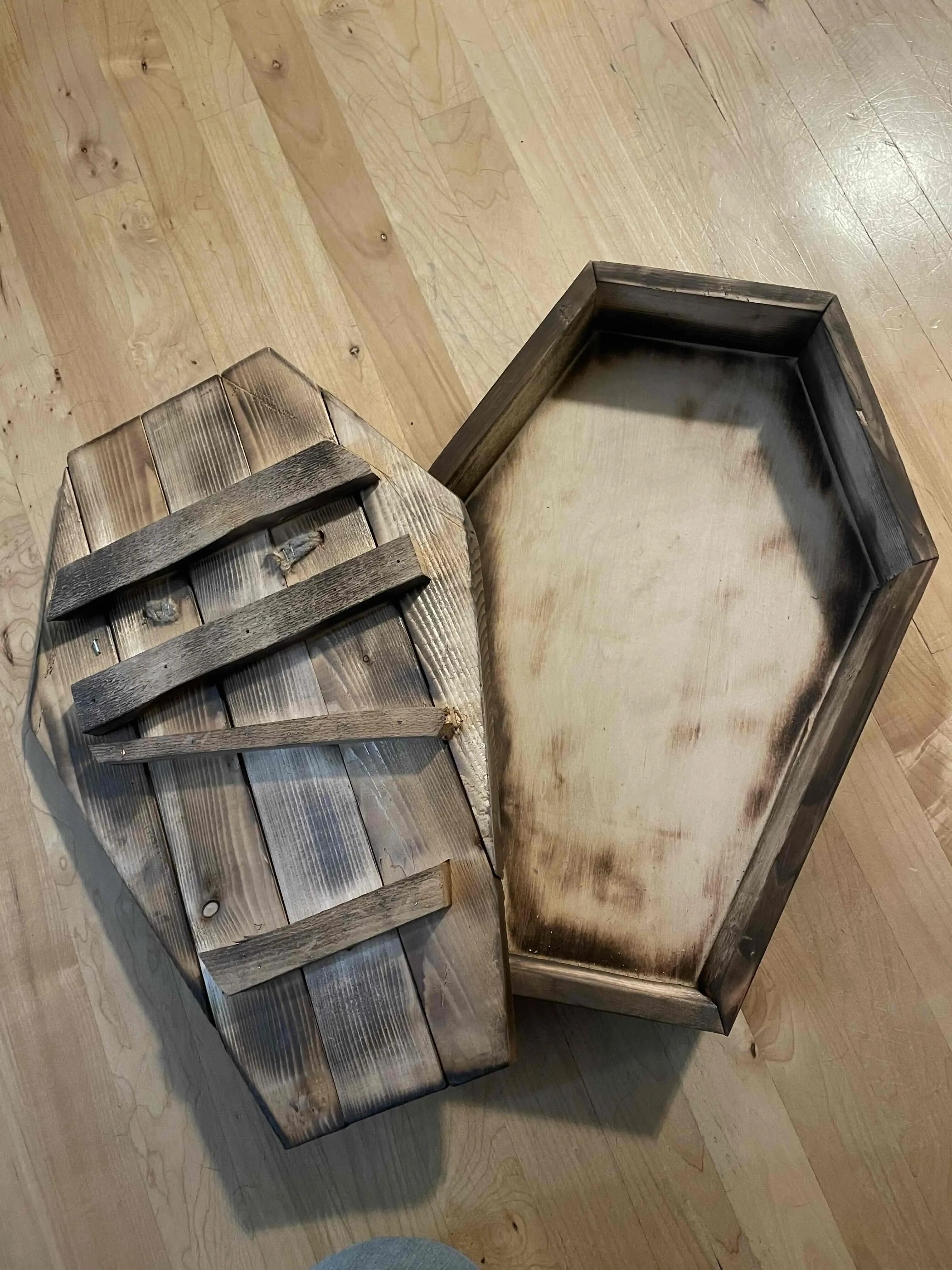I’m guessing this is the result of layers of slathering a fresh layer of finish on these tables. To be honest, I kind of like the look. Any idea what type of finish this might be?
Here’s a slightly different angle:

Urethane. The dark spots are big chunks of dirty plastic built up over many years. Lineseed or any oil doesn’t build up like this. You can see how much the surface has been raised from the level of the knot and clean wood. And how the dark spots scratch white like plastic. Also I’ve been around these a lot.
Thanks! I’m guessing oil based applied over many many years and the low spots are due to a mixture of mechanical damage (it is a park table after all) and flaking?
Polyurethane, a pretty common plastic, which is usually in a volatile solvent but can also be water based. Its very cheap and easy to apply. It adds new material to the surface every time and is often pretty thick. Oil soaks into wood and doesn’t protect the surface from mechanical damage. Its also expensive and difficult to apply. The low spots are where the decades of plastic have chipped away revealing the original wood. If you got a sample from the high spots you could count the layers like rings in the wood and figure out when the put the bench in.
Yep the only thing I can think of that would create a finish like this, and survive outside on a horizontal surface is yacht varnish
That, coupled with not sanding back before recoating would create this finish exactly. Looks to be well over a decade of recoating
I have a sock from the early 80s with this exact finish!
So are you implying that OP’s table has years of cumshots all over it?
Why I never!
Ew
It looks to me like years of linseed oil without any sanding or prep work in between.
If it helps there are decent drips on the bottom side that remind me of poly drips when I was getting started with poly. The total thickness in the high spots is easily 1/16, if not 1/8.
Would that produce the black splotches? Would they peel easily? I also like the look, but if parts of it are indicative of bad adhesion… ehhh…
Yeah, the lighter areas are where it has come up and been reapplied. Linseed oil gets darker with age, but I think the really dark areas are from a mold or mildew. I’ve only seen that in places with a lot of moisture year round.
Mold or mildew? Perfect for a kitchen remodel in a flip house.
We’re in SE MI, so I wouldn’t call it particularly moist but it’s not super dry either. The weather out here is very similar to what I experienced in New England
Edit: based on surface wear and looking at these things for years now, it’s been a few years since the last time they were refinished and there’s no flaking.
Coca-Cola, coffee, barbecue sauce, ketchup and hamburger juice … all naturally soaked and baked in the sun.



